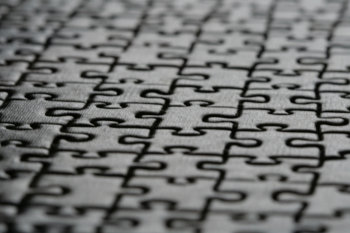When I look at people I believe I can see a bit of both Asperger and ADHD in almost everyone. Persons that talk a bit too much, or take a bit too long to solve a problem, or gets stunned by things happening too fast around them. But they don’t seem to have this so much that they have a real problem. It just seems like it’s part of their personal make-up or something they do like an Aspie or a person with ADHD (a Dampie?), they just don’t do it so much it becomes a problem.
I have come to a conclusion about all this. I have no hard scientific fact to support my thoughts but I have figured out this much; both Asperger Syndrome and ADHD are based on genes, but they are far from as simple as the classic “will my kid get blue eyes” question – or any question of eye color, hair color etc. When it comes to Asperger and ADHD it is most likely a combination of genetic factors that lays the ground for a diagnosis (and as I learned while studying psychology, both psychological and environmental factors will play into how pronounced these genetic factors will be and how many problems they will cause – or even if they will be an asset).
My conclusion is that most people has traces of both Asperger and ADHD in their genes (and a bunch of other psychological disorders). I think you should look at any disorder as a puzzle, with many pieces. The pieces being the genes, and the clarity of the puzzle – can you see what it depicts with the pieces you’ve got? – decides if there’s a diagnosis hiding behind the persons behavior, or not.
After all, in most families Asperger, ADHD, OCD, bipolar disorder, etc just didn’t pop up from nowhere. When you have someone with a diagnosis you can, in most cases, trace remnants of the disorder – or in fact precedents – back in the family tree, so that, for instance, the father might have it almost, but not the grandfather, but perhaps the grandmother on the father’s side has a really strong personality, but no real disorder, and so does the grandmother on the mother’s side, but not the grandfather on that side. However, when all these strong personalities and “almosts” comes together in a grand child, suddenly there’s a diagnosis… or two…

